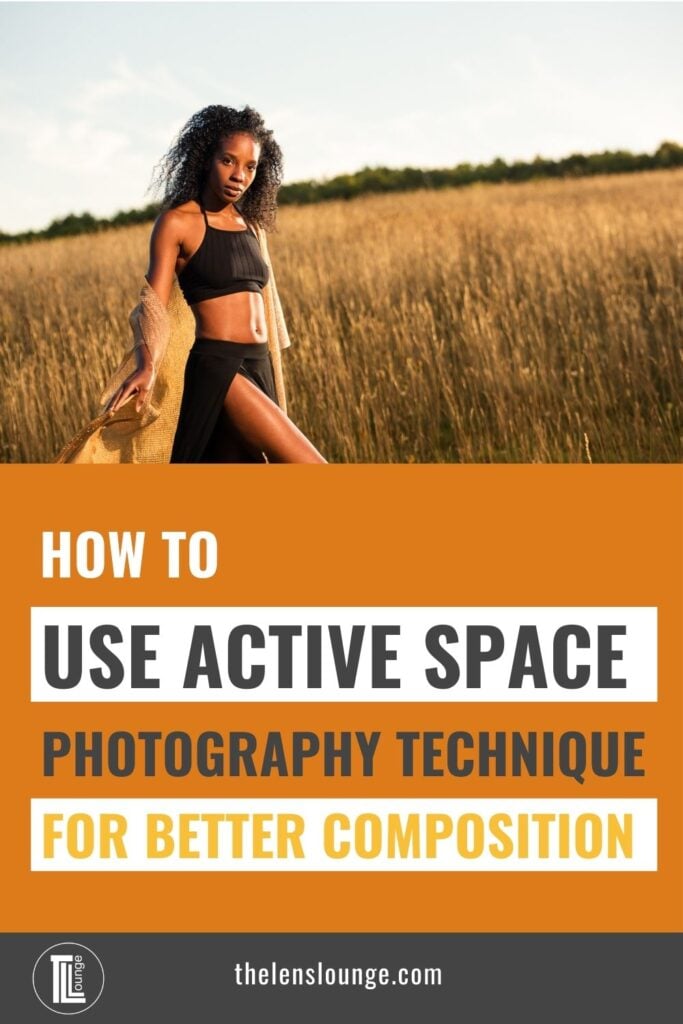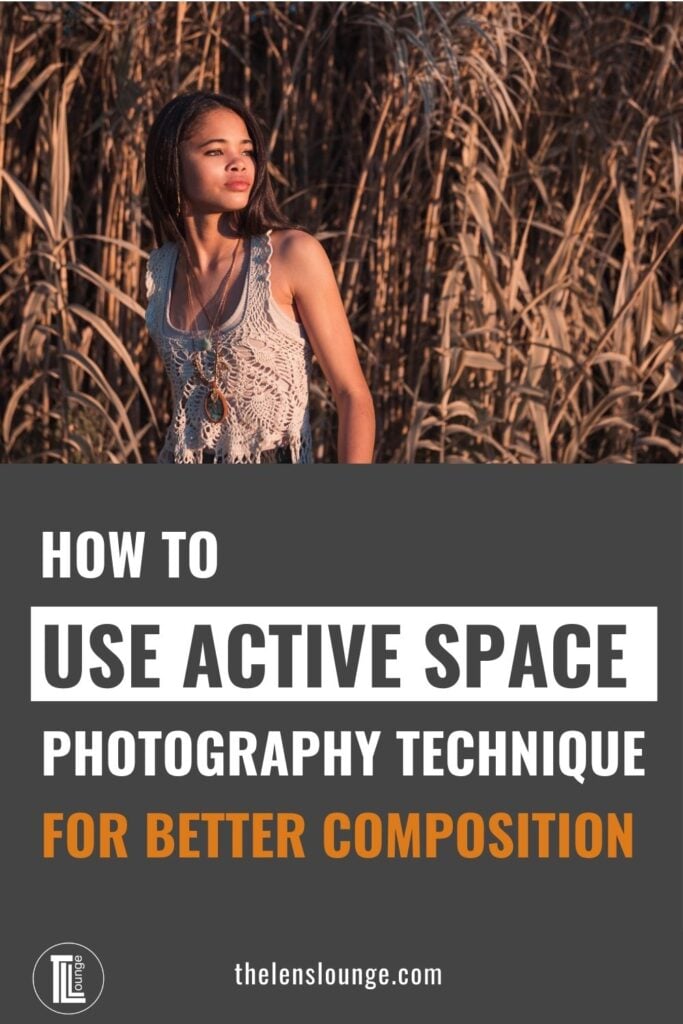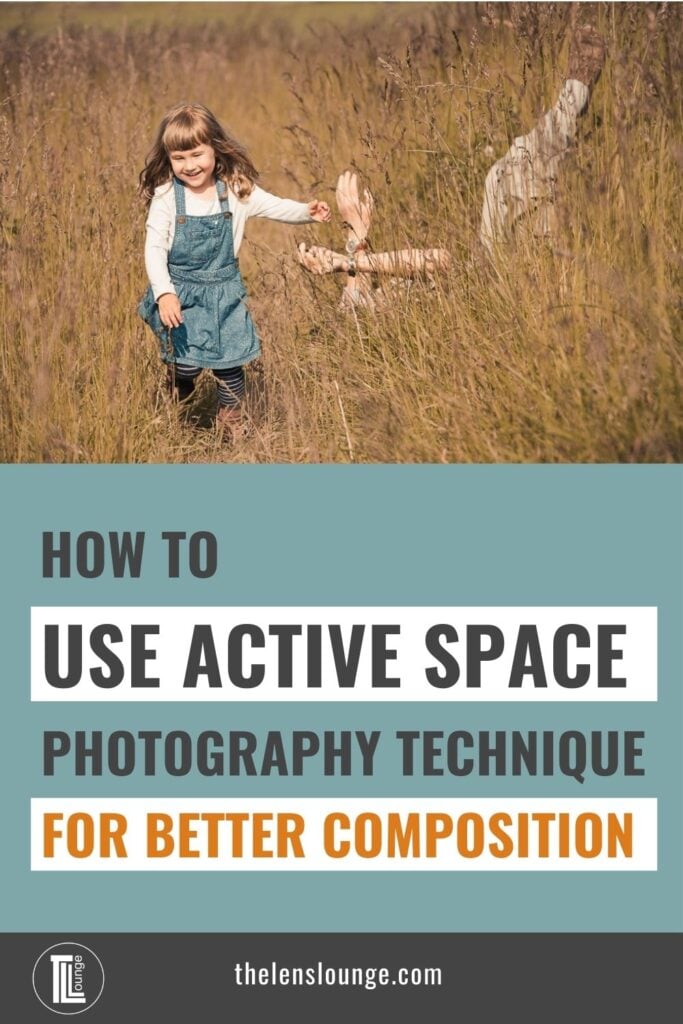Active space in photography composition can vary in size, shape and where it is in an image, depending on the composition and intended impact of the photograph. The use of space is a vital part of storytelling in an image, so active space can have a huge impact in creating engaging images.
Importance of active space in photography composition
Composition is a fundamental aspect of photography that involves the deliberate arrangement of visual elements within the frame to create harmony, or imbalance, and impact.
Active space in a photo is the space into which a subject is moving or looking. So how you use space says a lot about the subject of the photograph and the story you’re telling.
Active space is a key component of composition as it contributes to the overall balance and visual dynamics of the image and helps to direct the viewer’s eye. So neglecting active space in composition or overlooking its significance can result in a cluttered or unbalanced image with crowded composition.
Which is why understanding how to use active space as a compositional technique is essential to visually compelling images.

The space behind her is dead space and the space in front of her is active space. Because she has a lot of room to gaze into, the image feels calm, which matches her expression. The warm tones of the setting sun add to the calm feeling.
The rule of space
The rule of space is about how you use space in an image and where you place your subject in the space to tell a story and enhance composition. It consists of four types of space:
- Active space
- Dead space
- Positive space
- Negative space
While active space is the area into which the subject is moving or looking, dead space is the area behind the subject, or from which the subject has come. So active space is the opposite of dead space.
While positive space refers to the subject, or subjects and other obvious elements, in an image, negative space is the empty areas surrounding subjects. So negative space is a visual contrast to positive space. It can enhance the overall composition by providing breathing room for the subject and emphasizing or de-emphasizing the subject’s presence. Negative space can also be active space.
The interplay between active space vs dead space and positive space vs negative space is the crux of using the rule of space in photography and is crucial in creating a balanced composition.
Now let’s take a closer look at how to use active space in photography composition.
The role of active space in photos
By strategically placing the subject within the frame you can use active space to create balance or imbalance in an image, depending on the feeling you want to create or the message you want to underline.

In the image on the left of this action shot, she has room to leap into, but in the image on the right she’s too close to the edge of the frame and your eye will bounce from the subject to the space behind her and back in an uncomfortable way.
The use of space and movement
The amount of active space in front of a moving subject helps convey the sense of energy and motion. When there’s a little space in front of them, it feels as if they’re going to crash into the edge of the frame.
A lot of space in front of the subject gives them room to move into. So it helps to add speed to the sense of movement or action, as well as a sense of anticipation of the direction of the subject.
For example capturing action shots of a:
- Runner in mid-stride running towards the edge of the frame needs space in front of the runner
- Motorcyclist racing past you down the straight of a race track needs space to race into

The use of background and foreground elements in the composition frame the subject and lead the viewer to her. She’s walking in the direction of the leading lines, so our eyes move in a gentle loop around the image, which elevates the composition and adds to the feeling of movement.
Active space and visual flow
You can use the active space to create a circular or looping visual flow to the image. By placing elements that lead the viewer’s eye in a circular pattern, you create a sense of continuity and rhythm with the image.
This draws the viewer’s attention and encourages them to explore the entire frame, which enhances the overall visual experience.

These examples of active space in photos demonstrate how including enough active space for the subject gives her room to breathe. On the right you can see how when you don’t use active space properly it leads to visual tension for the viewer.
Creating tension with active space composition
On the other hand you can use the active space to impact the emotional feel of a photo by creating tension.
That said, tension isn’t necessarily a bad thing. Only when you don’t want it in an image. Well-balanced compositions feel harmonious and unbalanced composition creates tension.
So, leaving enough space in front of the subject creates a sense of balance and not allowing much active space creates tension.
For example a subject gazing:
- Into a vast amount of space feels wistful, contemplative
- At the edge of the frame feels cornered, unhappy
A lot of empty space in an image without many active elements feels calm and serene. It can also feel lonely, depending on the subject matter and what other compositional techniques are used.

A happy expression, blue sky and plenty of space around the subject add to the light and airy feel of this image.
Composition techniques to use with active space
You can enhance the use of active space in photography by combining it with another rule of composition. A few examples are:
- The rule of thirds
- The golden ratio
- Framing
Rule of thirds and active space in composition
The rule of thirds is a composition technique that divides the frame into a grid of nine equal parts with two horizontal and two vertical lines. The intersecting points of these lines are key points of interest, so this is where you place the subject.
When you place the subject on a vertical line looking into space in the image, they have room to breathe. However, when the space is behind the subject, it creates tension and a feeling of being boxed in.
So if a subject is placed on the left vertical line looking towards the:
- Right of the image, they have breathing room with a lot of negative space
- Left of the image, they’re boxed in with not much negative space
Negative space, also known as white space, gives the viewer a resting place for their eyes.
You can see more rule of thirds examples here.
The golden ratio and its relationship to active space
The golden ratio is a mathematical concept that’s been used in art and design for centuries. It represents a specific ratio of 1:1.618, which is believed to be aesthetically pleasing and harmonious.
That gets a bit technical. So, to simplify the concept, in practice it involves placing the subject very similar to the rule of thirds, and involves consideration of other elements within the image to lead the eye to the subject.
Of course it’s more complicated than that, and you can read more here about how the golden ratio works.
Framing techniques to enhance the use of active space
Use framing in photos to create a visual boundary around the subject and draw attention to them. A frame within a frame uses space and adds depth, dimension and context to the image.
By incorporating elements in the foreground or background you can frame your subject. The frame can be natural, such as branches, archways or doorways, or it can be created with made objects like windows or fences.

When the subject is small in an uncluttered frame the composition feels calm
Common mistakes to avoid with active space in photography composition
In photography space isn’t just space. It’s as much a part of an image as any other element of design in composition.
By avoiding these pitfalls you’ll ensure that your use of active space enhances the overall composition of an image and not the other way around.
Overcrowding the frame with unnecessary elements
One common mistake in photography is to overcrowd the frame. When active space becomes cluttered with unrelated or distracting elements it can detract from the main subject and dilute the visual impact of the image.
By decluttering the active space and focusing on including only key elements, you create a more visually appealing photo.
Neglecting the impact of active space in composition
Because active space plays a vital role in storytelling, failing to use the active space properly can result in an image that feels unbalanced or lacks visual interest. It’s essential to pay attention to the main subject and position them within the space to create a cohesive image.
Lack of intentionality when using active space
This is similar to neglecting active space, but it’s slightly different, because it involves including space in an image but without thinking about it’s importance and can led to a missed opportunity enhance the storytelling.
It’s important to have a clear purpose and intention behind the use of active space. Ask yourself how it contributes to the overall narrative and what visual effect it creates. By being intentional you’ll elevate your composition skills and create images that convey your desired message.
Wrapping up what is active space in photography composition
Active space is a crucial element of photography composition that adds to the story of the image.
The proper use of active space helps create visual flow and movement while avoiding common mistakes such as overcrowding the frame.
Like any compositional rule, when you break the rule, you create tension. So sometimes breaking the rule is right for the photo.
By experimenting with the use of active space you can achieve unique and powerful images.
Leave a comment
If you have any questions about what is active space in photography composition, let us know in the comments.
Also, I love good news, so if my photography tips have helped you to take better photos using active space, share that too.


